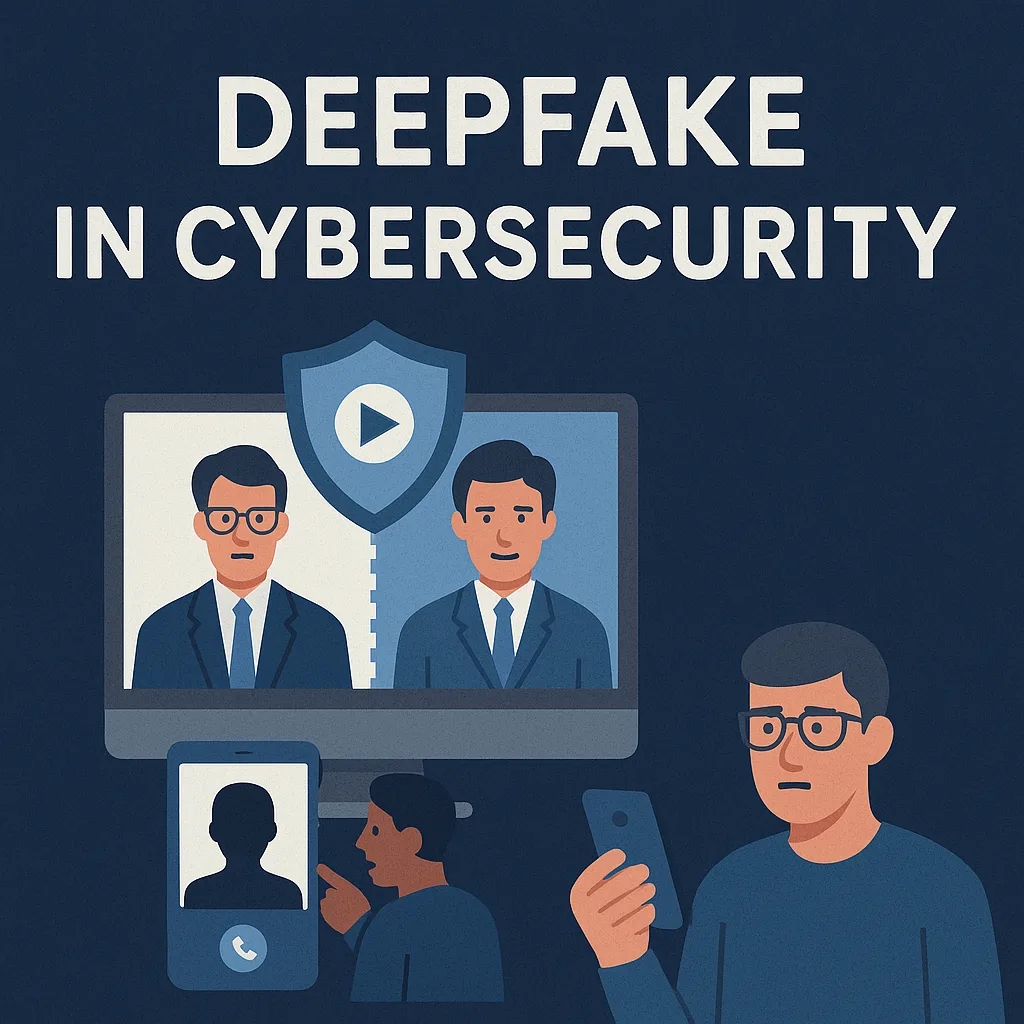What happens when you can no longer trust what you see or hear online? That’s the chilling reality brought on by deepfakes – hyper-realistic digital forgeries created using artificial intelligence. While initially viewed as novelties or entertainment, deepfakes have quickly evolved into a serious cybersecurity threat capable of undermining trust, manipulating perceptions, and breaching organizational defenses.
In this article, we explore what deepfakes are, how they work, the risks they pose in cybersecurity, and how businesses and individuals can fight back.
What Are Deepfakes?
Deepfakes are synthetic media—images, audio, or videos—that use deep learning algorithms to superimpose or replicate someone’s likeness or voice. Unlike simple photoshopping, deepfakes leverage Generative Adversarial Networks (GANs) and other AI models to produce content that’s nearly indistinguishable from real footage.
The Cybersecurity Risk Landscape
Deepfakes are no longer limited to celebrity face swaps. They’re now being weaponized in corporate espionage, fraud, social engineering, and political manipulation.
1. Impersonation and Social Engineering
Deepfakes are being used to impersonate CEOs, CFOs, and executives in real-time. Attackers use:
- AI-generated audio to mimic a senior leader’s voice
- Face-swapped video calls to request fraudulent transfers or confidential data
Example: In a 2020 case, fraudsters used deepfake audio to impersonate a CEO and convince an employee to transfer over $240,000.
2. Credential Phishing via Synthetic Media
Scammers may use deepfake videos to:
- Pretend to be tech support or HR during video calls
- Deliver urgent security alerts, prompting users to enter credentials
- Spread misinformation or disinformation that looks official
This creates a new phishing vector that exploits visual and auditory trust.
3. Reputation Damage and Blackmail
Deepfakes can be used to fabricate:
- Fake video evidence of criminal or unethical behavior
- False media targeting political figures or business leaders
- Deepfake revenge porn or private impersonations
The reputational damage can be catastrophic – even if proven fake.
4. AI in Cyberwarfare and Misinformation Campaigns
Nation-states and cyberterrorists can weaponize deepfakes to:
- Undermine public trust
- Cause market panic
- Interfere in elections or global diplomacy
In this context, deepfakes become a digital tool of influence and sabotage.
Why Are Deepfakes So Dangerous?
- They erode trust in what we see and hear
- They bypass traditional verification methods like facial recognition or voice ID
- They spread fast on social media and messaging platforms
- They are inexpensive to create with freely available tools and datasets
As deepfake quality improves and detection lags behind, the attack surface expands dramatically.
How to Detect Deepfakes
Detecting deepfakes is a fast-evolving challenge. However, current methods include:
Human Techniques
- Look for unnatural blinking, odd lighting, or glitches
- Notice slight delays in lip-syncing or mismatched audio
- Pay attention to backgrounds and pixelation around facial edges
Technical Tools
- Deepfake Detection Algorithms (e.g., Microsoft Video Authenticator, Intel FakeCatcher)
- Blockchain-based media verification (to trace authenticity of original files)
- Digital watermarking and content provenance systems
Behavioral Analytics
- Monitor for unusual requests even if the sender appears legitimate
- Use multi-factor authentication rather than voice or video alone
Defending Against Deepfakes in Cybersecurity
Employee Training and Awareness
- Teach users about deepfake red flags
- Simulate social engineering scenarios involving synthetic media
Authentication Upgrades
- Move beyond voice recognition—implement biometric fusion (face + fingerprint)
- Use real-time liveness detection in video verification systems
Content Authenticity Frameworks
- Collaborate with media partners on standards like C2PA (Coalition for Content Provenance and Authenticity)
- Support AI models trained to detect manipulation
Incident Response Planning
- Include deepfake scenarios in tabletop exercises
- Prepare public relations and legal response strategies for synthetic disinformation attacks
The Road Ahead
As synthetic media becomes more convincing, deepfake resilience must become part of a cybersecurity strategy. This includes not only technological safeguards, but also legal frameworks, digital literacy, and multi-disciplinary collaboration across industries.
We must move from questioning “Is it real?” to asking “Can we verify it?”
Conclusion
Deepfakes in cybersecurity are not science fiction—they’re here, now, and evolving. Whether used for financial gain, political disruption, or digital sabotage, these tools exploit one of the most critical elements in security: human trust.
Fighting back means arming users with awareness, deploying technical defenses, and demanding integrity in the digital content we consume. Because in a world where seeing is no longer believing, verification is everything.


